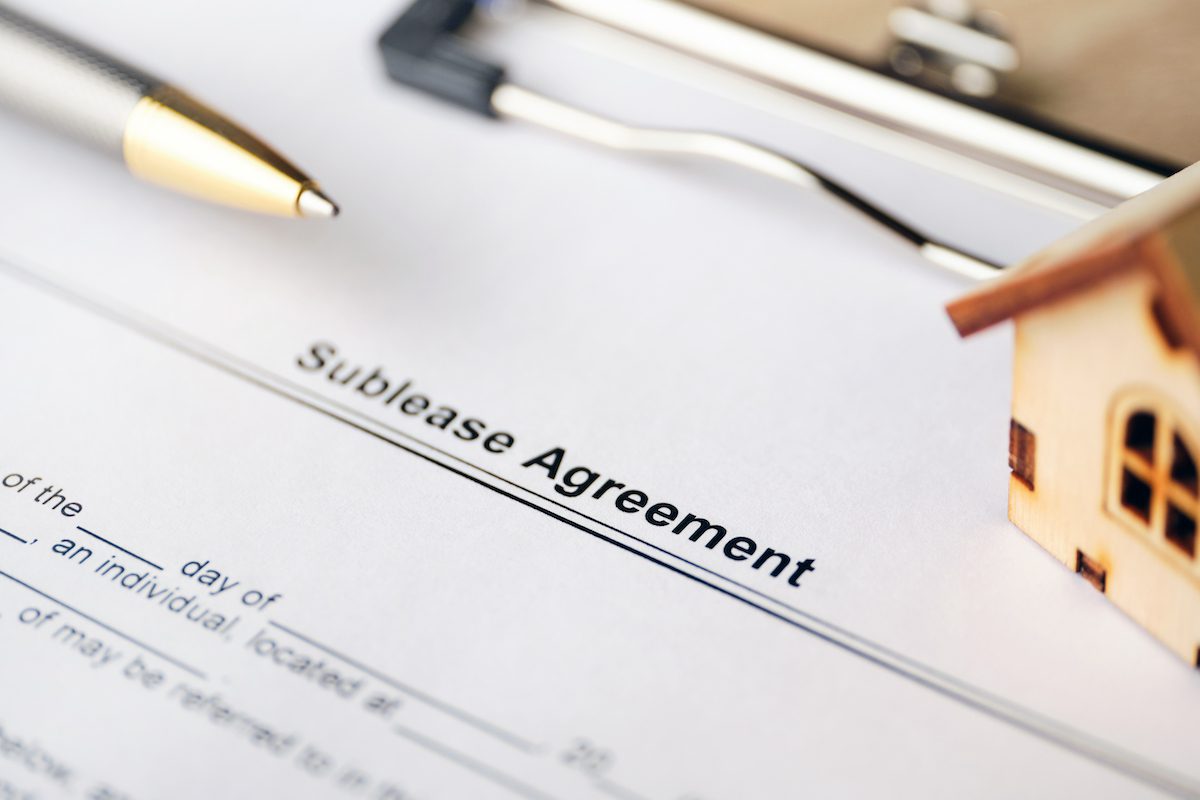Can a Landlord Say No to Subletting: Reasons to Refuse Your Tenant’s Subleasing Request

There are so many details to put into a lease that it's easy to overlook some that don't directly impact your tenant's occupancy. This includes the idea of subletting. Even if it's not something you're thinking about, your tenant might be.
Subletting your property can make for some tricky situations, not to mention confuse things as to who's responsible for what during the term of the lease. Can a landlord say no to subletting? To get ahead of any potential problems, put it all in writing when it comes to subletting.
What is subletting?
When a tenant rents out their current home to another tenant, while still under the original lease, it's known as subletting. Just like you have a lease with your original tenant, the tenant should create a sublease for their renter. This lease spells out how the rent will get broken down, who's responsible for damages and more.
Tenants will often decide to sublet if they suddenly have to move away, even temporarily. A sublet enables them to not pay to break their lease or end up paying rent for one place while living somewhere else.

What is the difference between renting and subletting?
As far as the details go, there really is no difference between subletting and renting. In both cases, someone lives in the property, pays rent and is responsible for damages. The key difference with a sublet is that all those responsibilities don't always fall on who's living on the property.
With a sublet, the subtenant should pay rent, but the original tenant may still be responsible for damages. As far as who you communicate with, the original tenant is still your tenant. You don't technically have to deal with the subtenant living on your property. You'd still hold the original tenant responsible for anything since that's who you have a contract with.
What are the types of subleases?
There are two different types of sublet agreements. As the landlord, you may want to put a subletting clause in your lease agreement that specifies whether one or both is OK with you.
A short-term sublet means the original tenant plans to return to the property at some point while their lease is still valid. This kind of sublet can happen if a tenant has to leave for a few months, but knows for sure they're coming back. Often, the original tenant will leave furniture and other property within the home.
A permanent sublet means the original renter has to leave the property early. Instead of breaking the lease, they're transferring the rent over to someone for the duration of the lease. The biggest issue with this type of sublease is that you've now got a tenant you didn't vet living in your property. You won't go through the normal process of reviewing their rental application and running a background check. Instead, someone else is deciding if this person is a worthy tenant for your property.
Can a landlord say no to subletting?
Every state has its own subletting laws, so it's important you're familiar with them before saying sublets aren't allowed at all. Some states do let you make that call, but others give all renters the right to sublet.
Even within these broad legal terms, there are rules for legal subletting, as well. For example, it's likely illegal for your renter to charge a subtenant more rent than they're paying themselves. You may want to research those and include them in the subletting clause of your lease to keep yourself clear of any issues.
Regardless of how you handle subletting, if your tenant decides to do it, they must tell you and get your approval. Ask for a written request for your records and to ensure neither tenant violates the original lease.
What is a good reason to refuse sublet?
If you live in a state where a landlord can say no to subletting, it's best to consider the pros and cons of your choice. A big positive in the column for allowing tenants to sublet is occupancy. This strategy ensures your home isn't vacant at an inconvenient time to rent.
For example, if your tenant needs to move out in December — a notoriously hard month to rent — and they break their lease, your rental home could sit empty for a month or two. With a sublet, that doesn't happen. Not only that, but the original tenant is then responsible for finding someone to occupy the home.
This is a great argument for subletting but there are also reasons why saying "no" makes sense. The biggest negative revolves around tenant screening. Whoever your existing tenant brings into sublet won't necessarily go through your initial screening process. If you can't require all subletting tenants to get screened by you, there's a chance whoever your tenant brings in may not meet your standards. A tenant who's offering the sublet only cares if the subtenant will pay rent. You've got other things to worry about.
Contacting your original tenant to deal with an unreliable subtenant can also create issues. What if your original tenant is suddenly hard to get in touch with? What if they don't prioritize passing messages from you along? It can get confusing figuring out when you can step in and speak to the subtenant directly when a sublet is in place. You may even find yourself having to evict both a tenant and a subtenant, which almost feels like having to do the same work twice.

How do I include subletting in the lease?
Even if you're without the ability to say no to subletting your property, you can get out in front of the issue. Insert a section in the lease your original tenant signs that covers this area. Especially if you know your tenant is already thinking about it, take steps to make the process as seamless as possible.
Make sure you include the following in the sublet section of your lease:
- Tenant must submit a written request to sublet before beginning the process, and include a set time frame for sublet
- The landlord must screen and approve all subtenants
- Require the subtenant to have renters insurance
- Set up a process for paying rent that ensures the money comes right to you. This ensures your tenant isn't overcharging the subtenant.
- The tenant must share all pertinent information regarding the property with the subtenant, including "house rules"
- Ban short-term sublets, such as those using Airbnb or VRBO
Taking the time to add this section to your lease ensures you protect yourself. You may even consider taking things a step further and providing a sublet agreement template for your tenant, just in case. That way, everything you think is important in a sublet agreement is sure to get included.
Who do I deal with if my tenants sublets the property?
The easy answer to this question is to reach out to your original tenant. They're the person you have a rental agreement with. Even though a subtenant is living in your property, their agreement is with your tenant, so in theory, your tenant must handle any issues.
The only instance where this isn't so cut and dry is if your tenant decides to sublet a room within the property. They'd still live there but add an extra tenant to the home. You can either allow them to sublet a room, or require this new person get added to the original lease. Either way, you'll most likely end up in contact with the subtenant for things like maintenance visits and general calls to the property.
You may have to allow subletting
There's no single answer to the question, "can a landlord say no to subletting?" Even if you want to say no and avoid all the potential complications, your state may not allow it. Regardless of local laws, though, you can protect yourself when it comes to a sublet by being perfectly clear of your parameters in your initial lease. With proper communication and the ability to approve a subtenant, subletting your property should feel no different than renting.
